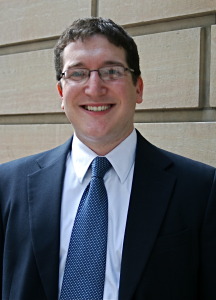The Un-Expendables: Superintendents retire, get rehired with pension and pay

By Tom Steward | Watchdog Minnesota Bureau
EDINA, Minn.— They could be called “The Un-Expendables,” public school superintendents who retire for a few days before they’re lured back for a sequel at their former jobs — with full salary, benefits, incentives and pension.
Educators employed before July 1989 whose age and years of work experience total 90 years or more qualify for a pension. By technically retiring for as little as one day, they can have it both ways — working and collecting both a paycheck and pension.
Ric Dressen, Edina Public Schools superintendent, retired in 2013 — for a week. After receiving $96,000 in severance pay, Dressen was back in the office, again getting his $193,000 salary plus a $90,395 annual pension.
“It’s not just superintendents. It happens with principals and other leadership,” said Susan Brott, Edina Public Schools communications director. “I think when we know we’re going to have a big wave of retirements, it’s a way to keep good people.”
Since the Edina educator’s contract is quadruple the state $46,000 earnings limit for beneficiaries, Dressen must defer part of his pension payment into an Earnings Limitation Savings Account for when he retires — again.
“They receive the balance of their ELSA account at a later date, when they reach their normal retirement age,” said John Wicklund, assistant executive director of administration for the Minnesota Teachers Retirement Association. “No interest is earned while funds accumulate in an ELSA account. “
Critics consider the practice “double-dipping” by public employees who draw a taxpayer-funded salary at the same time as a pension. For unretired Redwood Area Schools superintendent Rick Ellingworth, it means a $123,000 salary and $58,300 pension.
DOUBLE-DIPPING? Jonathan Blake of the Freedom Foundation of MN calls the unretirement trend among superintendents a form of double dipping that “games the system.”
“Even in the case of part-time consulting arrangements, it is a form of double-dipping. We should not allow districts or individuals to game the system at the expense of taxpayers,” said Jonathan Blake, who tracks public pensions for the Freedom Foundation of Minnesota.
“That happens a lot with CEOs of companies when they retire and go work somewhere else. I would not say that it’s necessarily double dipping,” said Brott. “Double dipping would be, I’m working in one district, and I’m also making money in another district. That’s not what is happening.”
Sue Ann Gruver retired as superintendent of Prior Lake-Savage Area Schools on Dec. 31, 2013. Two days later, Gruver was rehired in the same job at a salary of $160,000, peaking at $167,000 in 2017, along with an annual $62,840 pension.
“Minnesota law expressly allows eligible school administrators to retire, begin drawing their pension benefits and then be re-hired by their former employer or another school district,” said Kristi Mussman, communications director for Independent School District 719. “Dr. Gruver’s agreement was reviewed and approved by the school board’s legal counsel and TRA.”
Post-retirement benefits listed in Gruver’s current contract include total coverage family health and dental insurance coverage, a $200,000 life insurance policy, $4,000 for a whole life insurance policy, $4,000 for a health-care savings plan, 25 paid vacation days, 12 paid holidays, incentive pay of up to 4 percent of her $160,000 salary, $2,000 for a tax-sheltered annuity, disability and liability insurance, plus a $600 monthly car allowance.
School boards often cite unretired educators as visionaries uniquely qualified to follow through with changes they initiated before retiring, such as Edina’s Next Generation plan.
”Going out and bringing in a new leader who would have to get up to speed, when we’re talking about some significant transformative kinds of changes in terms of how we do school, the board just felt very strongly they wanted to continue his (Dressen’s) leadership,” said Susan Brott of Edina schools.
Schools make the case that taxpayers actually save money since districts no longer pay into the “retired” employee’s state pension fund at the rate of 7.5 percent a year. But others view it as little more than an accounting gimmick.
“Districts often claim these arrangements save money, but what they really do is shift costs to the state’s underfunded pension system while essentially allowing double-dipping by some retired superintendents, principals and teachers.
By rehiring superintendent Karen Orcutt for $188,000, Orono schools figure to save $37,000 in pension payments over three years.
“Had we chosen not to do this, the concern was that there were approximately 20 districts looking for a superintendent at that time; all would have been thrilled to offer a job to Dr. Orcutt. We did not want to risk that and I am glad we did not,” Orono School Board chair John Malone said in a statement.
The latest TRA figures, calculated for a 2011 St. Paul Pioneer Press report, show 5,700 pensioned educators were back in the classroom, mostly substitute teachers earning less than $10,000. The state does not track the number of unretired superintendents and administrators, but TRA officials say it’s not enough to weaken the fund’s bottom line.
“If you just look at it on the surface, I can understand somebody wondering what is happening. But on the other hand, there are no additional dollars being expended that would not have been expended for that person,” said Gary Amoroso, executive director of the Minnesota Association of School Administrators.







